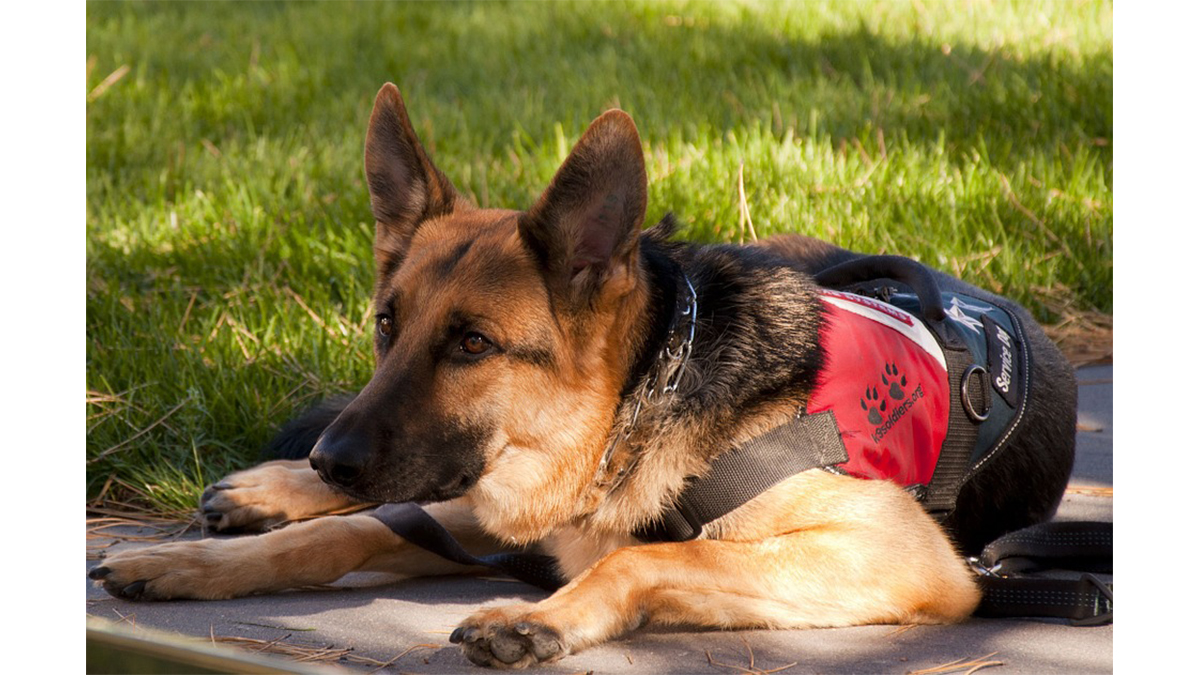
There are many misconceptions about service animals and I’m here to set the record straight based on the laws and regulations of where I live in the USA.
All states in the USA must abide by the regulations set by the American’s with Disability Act (I’ll be referring to this as the ADA for short). The difference between states will be minor regulations, so make sure you check with your local officials before venturing out with your own dog or questioning someone else’s.
Myth 1: Your dog must be registered to be considered a service dog.
Fact: The ADA does not require such registration and all registration companies in the USA are fake. In fact, these registries are harmful to the service dog community because people who do not know the law but meet someone with a “registered” service animal may think that is the law and give someone who is a legit service dog team a hard time for not being able to provide registration information.
For this reason, many service dog teams actually carry ADA cards that state the laws for those less informed.
Myth 2: You need a doctor’s note to qualify your dog as a service dog.
Fact: Nope. Your doctor may be able to recommend you get a service animal but they cannot write a prescription like you’d get filled at the pharmacy.
Myth 3: You must provide identification that your dog is a service dog in the form of a vest, ID tags, or other visual.
Fact: Most service dogs wear the vest as a harassment preventative. The ADA does not state that a service animal must wear any markings signifying they are a service dog.
Some handlers not only choose to put a vest on their dog but also use a leash that states, “service dog” on it so it stands out they are a service dog team.
Myth 4: A dog who provides comfort to their owner is providing a service and is considered a service dog.
Fact: A service dog must provide a service and/or do a task. Providing comfort does not qualify them as a service dog. It may, however, qualify them as an Emotional Support Animal (ESA). Emotional Support Animals are not protected under the same laws/regulations as service animals in the USA.
Myth 5: Service animals cost a lot of money.
Fact: Some service dog programs can cost upwards of $50,000 but those are not the only options for those that need a service animal. There are nonprofit organizations that will work with those who have income limitations. In fact, it’s legal to train your own service animal if you have the expertise.
Myth 6: Service animals are not allowed to be normal dogs and must be serious citizens around the clock.
Fact: Training a dog to be a service animal does not change their personality but instead changes what their focus is. For many service animals as long as their vest is on they know they’re working. When the vest comes off they are allowed to play and behave like any other dog at the park. Think of it as putting on your work clothes and being in the mentality of going into the office but as soon as you get home and change into your pajamas, your mindset changes.
Kiba the Cosplaying Corgi is a testament to this.
Myth 7: Service animals are only used for visible illnesses like those in wheelchairs or blind.
Fact: Not all illnesses are visible. Anxiety, autism, seizures, diabetes, and bipolar disorder, just to name a few are invisible illnesses that service dogs can help with. Just because you see someone with no physical ailment, doesn’t mean they have a fake service dog.
Someone with anxiety may have a service dog to help detect panic attacks, bring them water in the event of an attack, or remind them to take their medicine. A seizure dog can detect when their handler may have an episode and warn them so they can take precautions to avoid it or get the individual help.
Myth 8: Only Golden Retrievers, Labradors, and German Shepards can be service dogs.
Fact: Golden Retrievers, Labradors, and German Shepherds are the more popular breeds to use but they are not the only ones capable of being service dogs. Actually, any breed (including mixed breeds) is capable of being service trained but some breeds are better at some jobs than others. Rescue animals have been known to be amazing service animals.
What’s important is the dog is paired with services it can provide. For instance, a toy poodle may be great at panic attack detection, but it won’t be so great at helping you up off the floor if you fall.
Myth 9: Having service dog grants you to rights to go anywhere.
Fact: The person with the rights is the handler, not the dog. The law prohibits the handler from being discriminated based on the dog.
With that said, service dog teams are only allowed public access. That means they cannot go somewhere that is off limits to the general public.
Myth 10: Under no circumstances can a business ask a service dog team to leave.
Fact: If the service dog pees or poops in a business or has unruly behavior and the handler takes no action to correct it, the business has the right to ask the service dog and the handler to leave. In places where food is served, the restaurant is not required to allow the dog to sit at the table or to feed them.
It’s important to remember that service animals are not something you want to have as much as you need to have. They are a shiny attraction and you should always respect both the animal and the handler. It’s generally best to ignore the dog so you don’t distract them from their duties.
If you must approach the team, do it with respect and always approach the handler and not the dog. Keep in mind what kind of questions you would feel comfortable being asked by a stranger.




There is also a myth that ANY animal can be a service animal. This is not true. Only dogs (and some cases, miniature horses), are allowed to be service animals.
There is also a myth that ANY animal can be a service animal. This is not true. Only dogs (and some cases, miniature horses), are allowed to be service animals.
woops, sorry, this posted twice. 🙁
This is really helpful. Do you know how much of this is true in Canada, too?
I’ve “heard” that Canada requires special training and the dog must pass a test but that is only what I’ve heard. I’m not a Canadian citizen so I’m not sure where to recommend you look to get correct information. 🙁